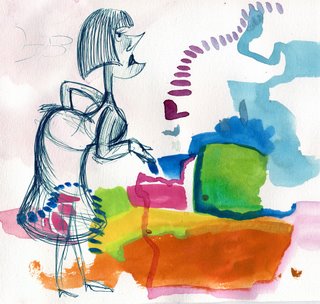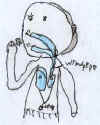Archive for the ‘Breath’ Category
January 7, 2009
Greetings Somanauts!
Here’s the new year’s update on the free GGI teleseminar: Yoga and the Brain!
First to say, the teleseminar is filling up with folks from different countries, proving the global interest in movement meditation and the brain!
With that in mind, the teleseminar is scheduled for the following dates and times below:
U.S. and U.K. residents:
Date: January 12, 2009
Time: 9 a.m – 10 a.m., Pacific Standard Time
For Australian and AsiaPacific Residents:
Date: January 13, 2009
Time: 10 a.m. (Sydney time zone)
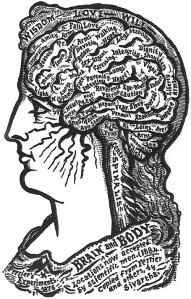
A recap of the teleseminar goal and content:
Who should take this teleseminar? Anyone working with, or interested in, the neurological effects of restorative or high performance training including allied health workers, public policy makers, physicians and physician assistants, psychiatrists, ADHD specialists, social entrepreneurs in health and wellness, and of course, all members of the somatic, yoga, meditation, athletic and martial arts community. (Global citizens please note: The teleseminar will be conducted in English.)
What will I learn: This teleseminar introduces the core neuroscience concepts central to any top quality training program that teaches yoga and movement meditation. Concepts include: neuroplasticity, immersive attention, somasensory integration and more.
What are the key benefits of this teleseminar?: You will leave the teleseminar energized and armed with a grand pattern of understanding how neurologically important your work is as a proponent of yoga movement and meditation. Seminar discussion is particularly valuable for anyone dedicated to improving the development and integration of brain, body and mind.
How do I join this free teleseminar? Simply write to 2docgee@gmail.com with the word “yes, ” along with your state and country of residence. Follow up information will be sent to you at your given email address.
Looking forward to your participation!
May the Breath Be With You!
Dr. G., Founding Director, The George Greenstein Institute, creating a sustainable future by coaching bodies, brains and minds!
The George Greenstein Institute is dedicated to serving the public good, by offering up to date, brain-based education in health, creativity and performance world wide.
Tags:Exercise and the Brain, Meditation and Neuroplasticity, Neuroplasticity, Neuroscience, SpaceSuit Yoga teleseminar, Yoga and the Brain, Yoga and Wholistic Health
Posted in Advances in Neuroscience, Ancient/Future Technologies of the Body, Brain, Brain Technologies, Brain Training, Breath, Cognitive Science, Consciousness, Contemplative Education, Mind/Brain Training, neuroleadership, Neuroplasticity, Neuroscience, SpaceSuit Yoga, Uncategorized, Whole-Brain Neuroscience, Yoga | Leave a Comment »
December 14, 2008
Welcome back to the discussion on visual meditation and mandalas!
Within major wisdom traditions of meditation, be they spiritual, religious or scientific brain and health training programs, there is typically the path of education or entrainment. Meditation or mental practice, after all, is not the default mode of a mature human central nervous system that is wired for turbo”different detecting” in space/time! Remember, difference detecting is that old survival mechanism that helps all mammals determine: Will that eat me or will I eat that? Is it safe to sleep here or is it not? And now in our modern jungle version where we communicate and travel at the speed of light, our human brains and central nervous systems race faster and faster to keep up with the deluge of information, images, and experiences we encounter day after day!
It makes sense that in response to or retreat from cultures drunk on speed, we would turn to “best practices” of earlier times, namely the ancient art and science of meditation, to help us slow down, to assist us in creating equilibrium in our bodies and in our lives. The good news is that at the dawn of the 21st century, meditation traditions practiced around the globe are finding their way into translation in order to prevent suffering and benefit all humankind. A grand project indeed!
So how does visual meditation figure into all of the hoopla about meditation as being great for creating inner peace. lowering stress and brain training?
Drawing upon both Buddhist and Hatha Yogic traditions, we find two key lessons to enable the learner: Turning Inward and Consciousness of Abstracting.
Turning inward allows us to find the most important radar signaling systems of the human body: Breathing and Paying Attention, both made possible by a “conscious” brain. [I’m using the term “conscious” in the here and now, scientific sense of brain activation.]
Paying attention enables us to “consciously abstract” or selectively focus upon a sign, an feeling, a sensation, a process of movement out of all that we might experience at any given moment.
Now, suggesting that someone turn inward seems to be completely counter intuitive to surviving in a culture that demands external focus for reading signs for survival! In gung ho American culture, think of the mockery we make of the quiet, reflective types — the teen who hides in in fantasy novels, the poet who sits and reflects on life, the college student who prefers to study Art, Sufi Dancing or Zen practice rather than ice hockey!
The irony of course is that in today’s sports training, “turning in” is one of the key training tools of Olympic training practice! (Think of Michael Phelp’s incredible ability to turn inward and “focus.”!!!). So turning inward, drawing one’s attention away from the noise of the outside world and turning it toward the space of one’s own inner life is a key step of Hatha Yoga, Zen, T.M. and Vipassana or Mindfulness traditions.
You might be saying at this point, “O.K., turn inward. And consciousness of what? How exactly do I use a visual image placed outside my own body?
Good question: Here’s the neuro-scoop and poop on using visual mandalas: (more…)
Tags:Art and Meditation, Art and the Brain, Brain Training and Meditation, Broadway Boogie, Consciousness of Abstracting, Meditation and the Brain, Mental Practice, Michael Phelps Trains with Focus, Monkey Mind, Neuro-Aesthetics, Neurology of Art, Phil George Surfboards, Piet Mondrian, Pratyahara Meditation, Ramachandran's universal laws of art, Stress Reduction and Meditation, V.S. Ramachandran, Visual Mandalas
Posted in Ancient/Future Technologies of the Body, Art and the Brain, Brain Technologies, Brain Training, Breath, Cognitive Science, Consciousness, Contemplative Education, Meditation, Mental Practice, Mind/Brain Training, Mindfulness Practice, Neuro-Aesthetics, Religion and the Brain, Whole-Brain Neuroscience | 2 Comments »
December 9, 2008
Greetings readers, a follow up on questions concerning choosing a visual meditation practice:
First a few words about the practice itself:
With respect to stress reduction and the desire to create a sense of inner well being, visual meditations may be ideal for
a) Those who find deep appreciation and calm in viewing visual art; and
b) Those who find the visual complexity of a mandala, the perfect sensory road to travel on in the quest for time/space centering of one’s “self.”
Put in everyday (well sorta) terms, visual meditations call on rehearsed neural circuits that enable the human brain to “pattern recognize” in ways that stretch beyond ordinary looking and seeing. Pattern recognition, after all, is basic to the acts of looking and seeing. As the great anthropologist and cognitive theorist Gregory Bateson pointed out, “pattern recognition” is that which binds mind to life. Or as AI theorist Ray Kurzweil maintains, pattern recognition constitutes the first sign of biological intelligence (something that can be shared with non-biological intelligence, presuming we program the “thing,”). Following this line of thinking, rehearsed pattern recognition creates the neurochemical connections necessary for the production of new “brain maps” — neural networks that correlate with learning and memory retention.
Practice, in other words, creates greater synaptic connections in our brains that form and correlate with sense perceptions, images, ideas, feelings and intuitions. With respect to using visual meditation as a way to reduce stress, some evidence suggests the less complex visual image, the easier it is to perceive and focus attention upon. Let’s take. for instance, the act of attending to a single image like this week’s Hubble Telescope shot of a globular cluster of stars in the Northern Sky!

Northern Sky, Globular Cluster M13 captured by the Hubble Telescope
If you’re prone to nature mysticism (C.F. William James), then you might first sense the awesome beauty of the cosmic start system. If you’re given to the metaphysics of geometry, you might pause on the elegance symbology of a cosmic circle. But if you’re interested in using the image of a cosmic star system to train your attention toward calmness and stability, then I suggest bringing along with visual attention, your sensory awareness of ordinary breathing. As one learns from the ancient Buddhist practice of mandala gazing, its the repeated experiential pairing of “looking” and “breathing” that helps one move from image perception and analysis to image experience. Meditative looking, to put it neatly, is embodied.
Today, neuroscientists reporting on perception and cognition, tell us that visual meditation experiences, like all other visual experiences, are synthesized in the visual cortex, related to other areas of the brain, e.g. the somasensory cortex. By adding breathing to the mix, visuality is further grounded in the body of experience.
Or to put it another way,
Bringing the art of breathing to the art of meditative visual image gazing transforms the neuroscience, if you will, of the visual experience.
What then do we make of the complex patterns one finds in Buddhist mandalas or Islamic mosque imagery, such as we find anew on Phil George’s sublime surfboards?
To be continued in my next blog….
Synaptically yours,
Dr. G.
Tags:Breathing Meditation, Buddhist Mandala Meditation, Gregory Bateson, Hubble Telescope Images, Islamic Surfboards, Mandala Meditation, Metaphysics of Geometry, Nature Mysticism, Neuro-Aesthetics, Neurology of Art, Pattern Recognition, Phil George, Ray Kurzweil, The brain and visual images, Visual Meditation, William James
Posted in Ancient/Future Technologies of the Body, Art and the Brain, Brain Maps, Brain Training, Breath, Contemplative Education, Meditation, Mind/Brain Training, Mindfulness Practice, Neuro-Aesthetics, Neuro-Respiration Technologies, Religion and the Brain, Whole-Brain Neuroscience | Leave a Comment »
December 4, 2008
Questions have recently come from readers regarding how to choose a path of meditation? “How do I know which kind is good for me?”
Well dear readers, choosing a meditation (a.k.a. brain fitness practice) is like picking shoes or a favorite climate: It’s a question of fit. And if you’re like moi, the process is going to be a choosy one! By this I mean it takes a careful “buyer’s” attitude to shopping for a method that appeals to your cultural upbringing and sensibility and especially to your neuro-cognitive, emotional, and physical type. Indophiles and Asianists aside, meditation often comes as a package these days, branded with cultural associations that range from ancient jargon to colorful visual motifs!
Still in today’s on and offline markets of meditation clinics, therapies and retreat centers, it’s not so easy for the novice to delineate between Mindfulness, T.M. or Zen, Yoga and Qi Gong. Turning to neuroscience offers some help: Neuroscientists studying human brains before and after specific meditation practices, discover that different methods actually call on different networks and regions within the human brain and… produce different results accordingly!

Artist: Brook, Second Grade, 2004 online image
For example, Richard Davidson and John Kabat Zinn, key researchers in the neuroscience of Mindfulness meditation, published fascinating evidence in 2003, noting measurable and interdependent results in changing both brain waves as well as immune antibodies! (See cited reference below). Theirs is one of many studies that point to the interconnectivity between how we spend our time and where we take our minds!
Translation?: Lower your stress with meditation you accomplish three things: 1) you jumpstart the signaling of positive affect in your brain; 2. You raise your levels of resistance to flu as well! (Think of the money you could save on expensive pharma and drug store cold medicine!) And by the consistent practice, you activate the neuroplastic capacity of the brain to grow itself.
In my life long research and personal study of meditative practices, I find it helpful to ask 3 questions and notice 3 structural types of meditation to order to determine a relevant meditation brand type.
(more…)
Tags:Advances in Neuroscience, Attention Training and Meditation, Breath Meditation, Hatha Yoga, Kundalini Yoga, Meditation, Mindfulness and Immunity, Mindfulness Meditation and the Brain, Moving Meditation, Neuroplasticity, Qi Gong and health improvement, Self Improvement, T.M. Meditation, Yoga and the Brain, Yoga Journal, Zen Meditation
Posted in Advances in Neuroscience, Body, Brain, Breath, Cognitive Science, Meditation, Neuroplasticity, Somatic, SpaceSuit Yoga, Whole-Brain Neuroscience | 3 Comments »
December 1, 2008
For those who have been following the Mumbai Siege and the news on the New York Wal-Mart mob murder, I suspect you are as stunned and horrified by the tragedy and madness of late. These are (sigh)… challenging times.
Yet in today’s edition of The New York Times‘ Week in Review, we read the following: ‘No matter how stressful the conditions, some of us are just genetically inclined towards calm…. or else we learn to manage the neuroticism.’ I’m not sure claims of suffering from high level cortical stress count in a case of neuroticism. Sure, in Jewish and Italian jokes this side of the Pacific, the motif of the suffering mother lends itself to Freudian and Hollywood overtones. But we’re in the age of a paradigm shift, where cultural stereotypes give way to real time strategies that manage the sweaty, messy corporeality of stress: Crying, Screaming, acting out — the drama of human emotion makes it damn near impossible for some of us to calm ourselves down.
One might think this is all a chicken or egg question, but as contemporary neuroscience makes clear, stress–-be it PTSD, sudden shock or chronic stress endured by those in untenable situations–shuts down thinking. Period. The effects can be neurologically devastating: In the U.S., University of California, Irvine researchers have shown that short term stress like long term chronic stress, reduces cellular connections in the hippocampus, the brain region identified with operations of learning and memory. At a time when stress levels are soaring through roofs of homes sliding into default mortgages, we really do need to find a collective way to calm down.
In weighing the options, meditation seems to make a difference, both in reducing stress and in creating some powerful neurological grown patterns. Notable research conducted at mindfulness medical clinics set up at UCLA and at Harvard signifies a movement toward using meditation to mediate stress and poor health. Harvard researcher Sarah Lazar has already shown that Mindfulness Meditation is correlated with a growth of cortical tissue in the frontal cortex and insula (the area said to integrate emotionally relevant, sense perceptions.)

QuBitTechnologies, 2007
I invite readers to peruse this blogsite for how-to’s in stress-reducing, meditative breathing practice, or write in for suggestions of practices that bear relevance to your current situation and learning style.
May the breath be with you.
Dr. G.
Tags:Advances in Neuroscience, changing neurotic habits, Emotional Intelligence, Harvard Mindfulness, Health and Fitness, Insula and sensory perception, Mindfulness Meditation, Neuroscience of Stress, New York Times on the genetics of calm, Sarah Lazar meditation research, Science of Meditation, Self Improvement, SpaceSuit Yoga and the Brain, The Black Friday Wal-Mart Mob, The Brain and Chronic Stress, The Mumbai Siege, UCLA Mindfulness
Posted in Advances in Neuroscience, Body, Brain, Breath, Cognitive Science, Meditation, Mind/Brain Training, Mindfulness Practice, Neuroplasticity, SpaceSuit Yoga | 2 Comments »
November 13, 2008
Greeting Somanauts!
I’m off to Neuroscience 2008 where I will spend 4 days with ear and brain to the ground, wall and any other surface that is vibrating with news from the international neuroscience research field! Thirty thousand scientists, neuronauts and neuroleaders are expected — that’s right, nearly 30,000 brains that have devoted hours of “attention density” to the frontier of neuroscience and neuroscience education. Talk about wattage!!!!
Due to an “embargo” placed on writing before the official press conferences, I will start posting formal review starting Sept 18.
However, do look for my tweeters now and then.
Speaking of attention density, other news: SpaceSuit Yoga Advocates the MindBody Project:
With Obama speaking directly to our broken health care system, BrainMindBody health advocacy groups are organizing to create an ‘Educate Obama‘ campaign.
Please Join me and others to inform our visionary President Elect and his transition team on the remarkable research in NeuroSomatic Health Practices, namely, the empirical research and education projects in brain/mind/body integration that point to the interrelation of
increasing stress and rising health costs.
and
decreasing stress and lowering of health costs.
Below are two links for joining the effort of a media campaign to awaken our new American leaders to the benefits of preventative medicine: This from a letter sent by http://www.worldtaichiday.org/
To Obama and Team:
The Obama Transition Team Site’s Contact Page is: http://change.gov/page/s/contact
A sample intro:
WHY IS STRESS AN INCREASING PROBLEM?
Bill Joy, the Chief Scientist of Sun Microsystems estimates that the speed of change is doubling exponentially every 18 months, and the speed of change will only increase in coming months, years, and decades. Change is stressful, even good change.
The change we have faced is daunting, but nothing compared to the next generation’s challenges of managing the stress of accelerating change.
It is in our interest to provide stress management achieving mind/body tools to adults, but particularly to the new generation(s), because their accumulating unmanaged stress of today, will translate into trillions of dollars of health costs in years to come.
To Incoming Medical and Education Officials:
Go to the web page below and print out 3 copies of the form letter. Send a postal mail to the incoming Secretary of Health, the Secretary of Education, and the incoming Surgeon General, to arrive on their desk when they take office on January 20th.
http://www.worldtaichiday.org and follow the links to MEDICAL RESEARCH and EDUCATION PROJECTS!
As always, may the breath be with you!
Synaptically yours,
Dr. G.
Tags:Meditation for Preventing Stroke, Neuroplasticity, Neuroscience 2008, neuroscience research, neurosomatics, Obama's health plan, Preventative Medicine, Reduce Health Costs, Society for Neuroscience, somatic healing, SpaceSuit Yoga Advocates MindBody Project, Stress Reduction, World Tai Chi and Qi Gong Day
Posted in Advances in Neuroscience, Brain Technologies, Breath, Contemplative Education, Human Physiology, Meditation, Mind/Brain Training, Mindfulness Practice, Neuroplasticity, Restorative Breath Protocols, Somatic, Theory of Everything, Uncategorized, Whole-Brain Neuroscience, Yoga | Leave a Comment »
September 23, 2008
The Platform: The State of U.S. Affairs, 2008
The Twitter: Shock, Fear and Dread in the U.S. (and abroad)
The Big Idea: There are no hopeless situations; only those who grow hopeless about them (George Greenstein, M.D., 1920-2005)
I’ve been receiving emails (and have sent a few myself) regarding the “shock” and “dread” from which people are reeling in light of the bail out crisis and media popularization of the Palin effect. So please allow me today to use this blog to address the neuroscience of “fear” and offer ways to change the neural setting in our brain to recognize the signals of creative problem-solving and hope.
There is no mistake that Barack Obama uses the term Hope, and more precisely, “the audacity of hope” in his attempt to reconnect American citizens to the core principles that shape a vibrant democracy, a politically and economically solvent society.

Obama’s cunning rhetorical move highlights the path of resistance to the Bush/Cheney SHOCK DOCTRINE that has waylaid many voices of contest and innovation, especially over the last eight years. What is the Shock Doctrine? Here I am drawing your attention to Naomi Klein’s THE SHOCK DOCTRINE: THE RISE OF DISASTER CAPITALISM, a thick, powerful study of the methods of shock used by students of Milton Friedman (e.g. Dick Cheney) to exploit the psychological and economic circumstances of crises and disasters.

My point is not to unpack Klein’s argument but to indicate a human and cultural pattern of response that we learn from reading Klein: When disaster strikes, shock takes over all body responses — breathing contracts, sweating begins, rational thinking becomes confused… for many, reason exits quickly out the door! An old and trust-worthy mammalian pattern has just set in: FEAR! For those who wish to take advantage, fear offers ideal conditions for exploitation. (Consider the logic: Fear responds to help.)
Turning to neuroscientists, we learn more about the neural conditions that create and perpetuate fear: Writing for Newsweek (Sept 15, 08) Dr. Michael Craig Miller, explains:
“Two deep brain structures called the amygdalae manage the important task of learning and remembering what you should be afraid of.”
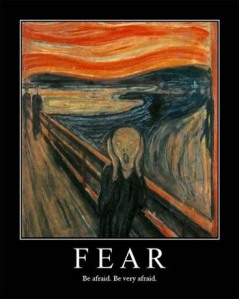
The amygdalae, it appears, function like good mental health turbo-networkers, rapidly collecting info that mobilizes the brain/body forces: heart rate, blood pressure, the capacity to reason. The two little clusters of neural networking also interface and connect with networks generating MEMORY.
“The fear system is extraordinarily efficient. It is so efficient that you don’t need to consciously register what is happening for the brain to kick off a response. If a car swerves into your lane of traffic, you will feel the fear before you understand it. Signals travel between the amygdala and your crisis system before the visual part of your brain has a chance to “see.” Organisms with slower responses probably did not get the opportunity to pass their genetic material along.”
Now the important paragraph that points to the generating pattern of collective shock and hysteria:
“Fear is contagious because the amygdala helps people not only recognize fear in the faces of others, but also to automatically scan for it. People or animals with damage to the amygdala lose these skills. Not only is the world more dangerous for them, the texture of life is ironed out; the world seems less compelling to them because their “excitement” anatomy is impaired.” (my emphasis)
Miller’s clarifying essay is just one of many to come down the pike, pointing out the DRAMATIC neuro consequences of being shocked by economic fallout and horrified of the short and long range possibilities of McCain/Palin in office.
So let’s connect the dots and do our simple brain math:
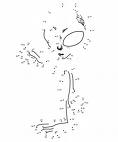
Frying in our own rage and gripped by the mighty handles of fear, our culture, our bodies, our speech, our minds entrain our brains into the rituals of fear: Fight or Flight.
Yet we are not mere mammals. Thanks to our highly evolved brain and thus the scientists, monks, somatic therapists who use their refined aptitude and skills to understand the brain/mind/body connection, we have learned a very important neural lesson that has large historical ramifications:
Fear is a response in the brain/body/mind. Change the brain and we change our body, our mind! Change our mind, our body and we change our brain!
To that end, and in service of offering a slice of whole-brain, somatic sanity to those hungering for a more judicious and delicious cultural pie, the following SpaceSuit Yoga tips for transforming Fear into Calm, Dread into Hope:
1) Practice a BIG IDEA: There are no hopeless situations, only those who grow hopeless about them.
2) Changing our brain begins with changing our breath.
Breath, after all, is the beginning and end of all human life.
To address a pattern of fear that has paralyzed one’s embodied brain and mind, go back to a daily practice of conscious, contemplative breathing. This blogsite offers tips on how to engage a simple practice of easy restorative breathing practices. (See the parent GGI website for links to other helpful meditation sites.
3) Breathing supports Initiation (Bonnie Bainbridge Cohen): To start any activity in your day, remember to notice what breathing actually feels like, what parts of the body are moved or involved in the process of breathing. Sturdy Breath enables A Sturdy Mind.
4) Mental Practice. With a calm and sturdy body/brain/mind, use your powers of Mental Practice to imagine a liberated landscape, a liberated body, an open space of movement and possibility. Picture hope, picture success.
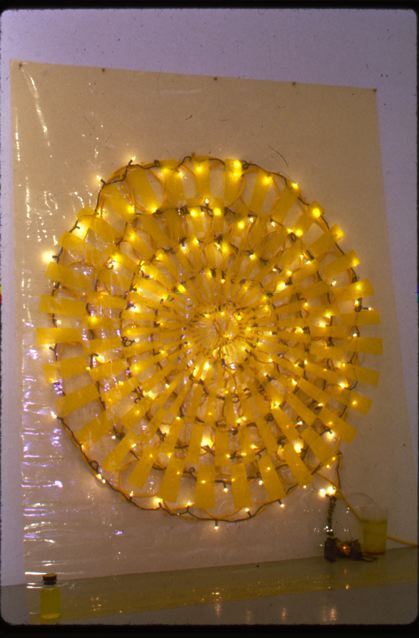
For the “how to’s” and the “go to’s” for stress reduction, breathing meditation and mental practice, please leave a comment or contact me by way of the GGI contact link.
May the Breath Be with you through this trying times!
Dr. G.
P.S. Check out the following sites that address or infer the neuro effects on the 2008 election:
1) http://dir.salon.com/topics/robert_burton/
2) google Newsweek and and search for Michael Craig Miller’s Newsweek essay noted above, entitled Sad Brain, Happy Brain) or go to http://samharris.org and search for the Miller piece.
Tags:Audacity of Hope, Breathing Meditation, Fearful brains, Meditation to Alleviate Fear and Dread, Meditations to reduce Fear and Anxiety, Mental Practice and Peak Performance, Michael Craig Miller M.D., Naomi Klein, Neuroplasticity and the voting, SpaceSuit Yoga Tips, The George Greenstein Institute, The History of Mass Hysteria, The Palin Effect, The Shock Doctrine, The U.S. Bail-Out Crisis, The Voter's Brain
Posted in Ancient/Future Technologies of the Body, Balancing the Brain Hemispheres, Body, Brain, Breath, Contemplative Education, Meditation, Mental Practice, Mind over Matter, Mindfulness Practice, Neuroplasticity, Neuroscience, Somatic, SpaceSuit Yoga, Uncategorized, Yoga | 3 Comments »
September 21, 2008
Quick Notice of Schedule change:
I just received word from Dr. Jill Bolte Taylor, noting her taped interview on the upcoming Sept 23 Oprah show is being postponed. No future date has been given.
As soon as I have word, I will be sure to share the updated news with all you somanauts!
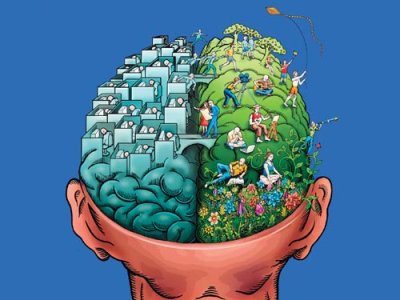
In the meantime, it’s reassuring to know that Dr. Taylor’s message has traveled wide and far as MY STROKE OF INSIGHT has been translated into 20 different languages! This is really important as translation brings to greater public awareness, the role contemporary neuroscience, and a personal commitment to healing plays in turning a tragedy into an inspiring story that uplifts and transforms other people’s lives.
Great week ahead! Stay Whole-Brained, Stay Hydrated and remember to Breath!
Dr. G.
P.S. Those interested in personal or corporate training in whole-brain health or neuro-leadership practices, please leave a comment or contact me through The George Greenstein Institute link (in the right hand column of this blog.
Tags:Balancing Right/Left Brain, Brain Injury, Jill Bolte Taylor, Meditation to Reduce Stress, My Stroke of Insight, Neuro-Leadership, Neuroplasticity, Neuroscience, Stroke, The George Greenstein Institute, Ways to Avoid Stroke, Whole Brain Health
Posted in Advances in Neuroscience, Balancing the Brain Hemispheres, Body, Brain, Brain Technologies, Brain Training, Breath, Meditation, Neuro-Aesthetics, Neuroplasticity, Right Brain Bliss, Right/Left Brain, TED 2008, Uncategorized | Leave a Comment »
September 10, 2008
The Platform: The Culture of Stress
The Twitter: Stress travels throught the body!
The Big IDEA: Stress the Mind, you stress the brain. Stress the Brain you stress your vital organs!!!!

Remember the body song we use to sing as kids?: “The thigh bone is connected to the knee bone and the knee bone is connected to the shin bone….” Well kids often know best and today, we have learned from traditional Western, Chinese, and Indian Auryvedic medicine that like life, the body is a complex system of interdependent systems. Stress in one is bound to affect the others.
A lesson I learned well in the acupuncturist’s office as I lay on the table needled so my “shin” would calm down. A visit to my brilliant Chinese Medical Doc, always reminds me of the effects of mental stress and anguish on on our kidneys and adrenals, on the connective tissue that wraps every fiber of our neuro-muscular being. And now, centuries later, research from contemporary neuro-science enriches the Chinese picture of human anatomy and illness. The brain — which connects through the central nervous system — to all other systems in the body, takes the hit from stress– what in this blog has been previously noted as the condition of “Neural Wreckage.”
In other words, new travels fast! The mounting tension from handling work, family, economic strife, the shift in global warming and the endless political battles of our day all adds up to one tight, drained, exhausted body/mind!!!!!!! I’ve spoken before of “technological time outs.” Now as we face the change of seasons and tough world issues, please ask yourself: How can I find a way, now and then, to “unplug from the culture of stress?
This blog will continue to offer ways to think about and avoid increasing Neural Wreckage along with other SpaceSuit Yoga detox tips.
May the Breath Be With You,
Dr. G.
Tags:Auryvedic Medicine, Brain Physiology, Chinese Medicine, Cognitive Time-Outs, Neural Wreckage, SpaceSuit Yoga Detox Tips, Stress from 2008 Election, Stress on Adrenals, Stress on Kidneys, Technological Time Outs, Whole Systems and the Human Body
Posted in Advances in Neuroscience, Body, Brain, Breath, Cognitive Science, Human Physiology, Somatic, Whole-Brain Neuroscience, Yoga | Leave a Comment »
September 9, 2008
Good morning Somanauts and Neuronauts!
SpaceSuit Yoga news:
I just heard from Dr. Jill BolteTaylor who said ” Hello friends, My Stroke of Insight is being translated into 20 different languages and I am currently scheduled to be on Oprah on Sept 23rd.”

Taylor’s appearance comes at a great time as the heat has been turned up from the ensuing political battle in the U.S., bringing everyone’s brain to a full boil!!! As our friends who have suffered the tragic results of brain-injury can tell you, a boiling brain leads to an uncertain if not a dehabilitating future. Taylor’s story speaks to the challenges and the blessings that await those attacked by stress and stroke.
In those moments of feeling like one is either in a world or country going mad, or inside a brain with the signals completely crosswired, tune into Taylor’s upcoming Oprah talk or tap into her TED 2008 talk (discussed on on this blogsite. See TED.com) Or read a page from Taylor’s book, MY STROKE OF INSIGHT.
This truly is a the season calling for brain cooling, inspiration and empowerment and asking the fundamental question, as Dr. Taylor asks,
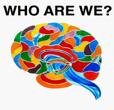
Look for the compassionate, the insightful leaders in your community, on the internet, and in mainstream media. Please Vote using embodied, whole brain intelligence!!!!!!
May the Breath Be With You!
Dr. G.
A
Tags:Balancing Brain Hemispheres, Brain Injury, Brain Tips for Personal Empowerment, Dr. Taylor on Oprah, Jill Bolte Taylor, My Stroke of Insight, Stress over 2008 Election, Using Whole Brain Intelligence
Posted in Advances in Neuroscience, Balancing the Brain Hemispheres, Body, Brain, Breath, Jill Bolte Taylor, Somanauts, TED 2008 | Leave a Comment »
August 21, 2008
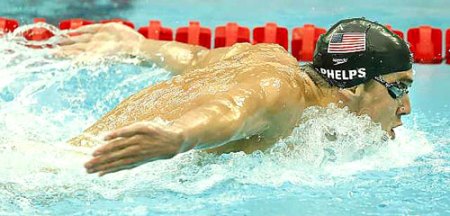
Phelps, 2008 Bejing Olympics
On the question of mental practice, meditation and athletic training: I noted yesterday that the great Olympic star Michael Phelps was seen as a child who lacked the necessary focus to 3rd grade academic tasks. With that in mind, much made of the fact that Phelps was diagnosed with ADHD and it was the practice of lane swimming that helped him “channel” his all over the map energy.
(See http://www.additudemag.com/adhd/article/1998.html)
I won’t debate the cultural psychology or politics of the ADHD diagnosis, but its safe to say that in listening to Phelps speak about his own training methods, we hear the mantra “focus, focus, focus.” Dedicated goal setting, avoiding negative mental chatter, and being with the very moment of his action (a.k.a. the ole Ram Dass mantra “Be Here Now”) — this is the stuff of Olympic athletic mental training.
We also learn that Phelps has the gift of maintaining a relaxed state before a meet and there’s talk that he produces less lactic acid build up in his muscles that most athletes. No doubt, there are many online (yours truly included) who are curious to comb through the details of Phelps Olympic genius.
And what can we learn from this athletic genius? Mental training of Olympic athletes has long been of interested to sports trainers, kinesiologists and sport psychologists but more to the point: Phelps’s own minimalist theory (“Set a goal. Focus only on that goal”) insinuates the brain technology involved in peak body performance. Sports psychologist Steve Ungerleider offers a somanautic perspective culled from years of researching Olympic athlete training::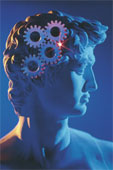
From his 1996/2005 book MENTAL TRAINING FOR PEAK PERFORMANCE:
Breath, Meditation and Forming Mental Snapshots are two of the four mental practice traits shared amongst Olympic athletes. (The other two being building confidence by means of positive self-talk and learning to use relaxation to cool down and revvv up!) Yep, taking time to find the natural rhythm of ordinary breathing and picturing the goal — using your imagination to see the goal accomplished — even visualizing all of the steps in getting to the goal — the power of creating a mental “snapshot” cannot be under-estimated by anyone engaged in sport or movement training.
Here then are glorious mind/brain/body fruits for digesting: Those fascinated by the challenge of peak performance, be you swimmer, biker, dancer, designer, entrepreneur, corporate leader or yogic journey woman/man of health, fitness and well-being, the kernel of Olympic truth seems to lie in the story told by those who have imagined and accomplished their goals:
SpaceSuit Yoga/Olympic Mantra:
Make a goal.
Focus on the Goal.
Breath into the orchestrated unity of Mind/Body/Brain.

Visualize the Goal.
Feel into the Goal.
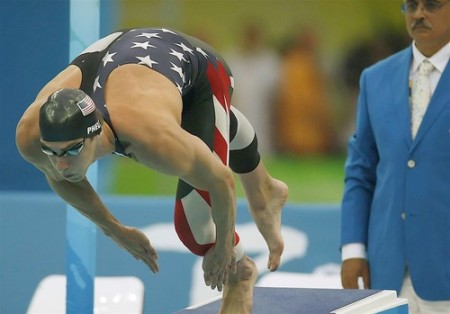
Be the Goal.
The vast frontier of mental practice is before us — with neuroscience unlocking the neuronal mysteries of the brain/body mapping, and showing the neural networking engaged by meditation, guided imagery and right brain talents like mental practice visualization — students, parents, teachers, coaches, thought leaders and all those seeking the 21 century path of enlightenment are bound to reap the benefits!
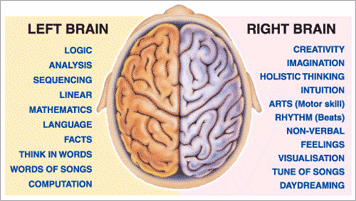
May the Breath Be With You!
Dr. G.
Tags:GGI, Goal Setting, Meditation and Olympic Training, Mental Practice, Mental Practice and Peak Performance, Michael Phelps & ADHD, SpaceSuit Yoga, Steve Ungerleider, Visualization and Olympic Training
Posted in Advances in Neuroscience, Brain, Breath, Meditation, Mental Practice, Mind over Matter, Mind/Brain Training, Mindfulness Practice, Right/Left Brain, Somanauts, Somatic, SpaceSuit Yoga, Whole-Brain Neuroscience | 2 Comments »
August 20, 2008
The Platform: 2008 Bejing Olympics
The Twitter: Brain Training for Gold Medals and more!
The Application: Meditation, Mental Practice, Attention and Awareness Training (AAT)

A recent article in the New York times noted Michael Phelps’s 3rd grade teacher extending congratulations to Phelps and his family for the gold medal success. As we learn, Phleps in his early years had the teacher worried that he had “no focus” in his studies. (What 3rd grader has “focus” in academic studies?!!!) With Phelps now drawing world-wide attention to the glory of his strategic swimming, the teacher apologies with a realization: Phelps just had to find the subject that drew out his focused attention.
Expectations of 3rd graders aside, Phelps’s victory is his to savor for years to come for he has proven to himself and to the world that consistent physical and mental training over time can transform our lives in ways that reach beyond our imagination.
 Clearly, Phelps and his swim team buddies have mastered the art and science of “concentration” or “focused attention” — practices that might be considered comparable to the astounding feats of attention practiced by Buddhist monks submitted to recent neuro-scientific studies. Turning to the neuroscience camp, we learn the years of focused attention, of bringing “mindfulness” to our actions makes significant neurological changes in the brain. As science writer Sharon Begley reminds us in TRAIN YOUR MIND, CHANGE YOUR BRAIN, the matter of morphing brain tissue comes down to a simple fact: You’ve got to want to change it for the brain to change.
Clearly, Phelps and his swim team buddies have mastered the art and science of “concentration” or “focused attention” — practices that might be considered comparable to the astounding feats of attention practiced by Buddhist monks submitted to recent neuro-scientific studies. Turning to the neuroscience camp, we learn the years of focused attention, of bringing “mindfulness” to our actions makes significant neurological changes in the brain. As science writer Sharon Begley reminds us in TRAIN YOUR MIND, CHANGE YOUR BRAIN, the matter of morphing brain tissue comes down to a simple fact: You’ve got to want to change it for the brain to change.
No doubt, Phelps and his crew wanted to break records, win gold medals, perform at the top of their game. The reason for such bold desire? We can leave that to enlightened or nefarious speculation, for the real story here is this: Hot, passionate, and inspired human desire enables dedicated action. Dedicated Mental Practice transforms the brain….and body.
I vote for inviting Phelps and the American men’s swim team into the brain labs of UCLA, University of Washington, or Wisconsin to test their neuronal abilities to “pay attention.” And then let’s bring in full tilt Olympic education into the school system so that 3rd graders can be inspired to do their thing.

Michael Phelps: You Go Girl!
And to all of the somanauts out there, a SpaceSuit Yoga tip for mental practice:
1) Best way to begin: Pay close and intimate attention to breathing, whether you’re walking, swimming, or lying down. Notice the feeling of breathing — whether breathing takes up a lot of room or very little room, whether breathing feels fast or slow. Visualize breathing — get a sense of where it actually takes place in your body.
2. Set aside a little time each day to “pay attention” to your breath and use a timer, so you don’t have to keep track of the minutes. Master one sequence of time before adding more minutes.
Master one sequence of time before adding more minutes.
3. Keep a written record of your time so you can 1) notice the sequence of improvements and 2) make a felt, embodied connection between your inner sense of mastery with an outer account of recorded time.
4. Invigorate yourself with reading on how to motivate and change your brain! Several suggestions have already been noted in this blog. For history buffs — check out the “Zen and the Art of Archery” — a classic on mental practice and meditation.
May the breath and brain be with you!
Dr. G.
Tags:2008 Bejing Olympics, Meditation and the Brain, Mental Practice and the Brain, Mental Practice, Michael Phelps, Sports Training, Training of Olympic Athletes, Zen and the Art of Archery
Posted in Advances in Neuroscience, Body Maps, Brain, Breath, Meditation, Mental Practice, Mind over Matter, Mindfulness Practice, Neuro-Respiration Technologies, Neuroplasticity, Neuroscience, Somanauts, SpaceSuit Yoga | 1 Comment »
March 29, 2008
I’m writing this tonite, after a week of travel — much to report from the front lines of neuroscience but right now a personal note: I’ve just learned that one of my dearest friends and colleagues has suffered a massive stroke. On the heels of Jill Bolte Taylor’s talk, it seems all the more auspicious to bring to your attention the wisdom of entraining your brain toward relaxation and restoration by means of some contemplative practice. Please take note of the followings symptoms of stroke which Dr. Taylor noted in her talk:From the American Stroke Foundation web page, http://www.americanstroke.org
If you believe you or someone you know is experiencing any of these signs do not hesitate to call 911 for immediate treatment!
Suddenly feeling weak in an arm, hand or leg
Cannot feel one side of your face or body
Suddenly cannot see out of one eye
Suddenly have a hard time walking
Cannot understand what someone is saying
Feeling dizzy or losing your balance
Having the worst headache you have ever had
How to Recognize a Stroke
If you think someone is having a stroke, remember the 60 second test:
1. Ask the individual to smile.
2. Ask him or her to raise both arms.
3. Ask the person to repeat a simple sentence, like “It is sunny out today.”
IF THE INDIVIDUAL HAS TROUBLE WITH ANY OF THESE TASKS, CALL 911 IMMEDIATELY!
Reduce your Risk of Stroke
Annual physicals
Healthy diet
Be aware of your family history
Maintain a healthy weight for your body type
Quit smoking
Get regular blood pressure and cholesterol checks
Exercise
If diabetic, manage your blood sugar levels
Take your medications accordingly
And to this list, may I add: Please give yourself hemisphere balancing opportunities by means of relaxation or contemplative practices like T.M. or Breathing meditation from any number of traditions like Zen, Qi Gong … or the breathing practices taught by yours truly, SpaceSuit Yoga.
May the Breath Be With All of You Tonite!
Tags:Balancing the Brain Hemispheres, Breathing Meditation, Jill Bolte Taylor, Meditation for Preventing Stroke, Signs of Stroke, SpaceSuit Yoga
Posted in Ancient/Future Technologies of the Body, Balancing the Brain Hemispheres, Brain, Breath, Jill Bolte Taylor, Meditation, Mindfulness Practice, Restorative Breath Protocols, Stroke, TED 2008, TED Aspen 2008, Yoga | 5 Comments »
March 7, 2008
I’m working to get images from TED posted onto this blog, in the meantime, a thought about hemispheric time outs: Stroke or Rest?
I mentioned Jill Bolte Taylor’s TED 2008 talk on hemispheric activity and now after a New York Times article on “secular sabbaths,” a brief plug for a hemispheric time out. Rather than wait for the stress of living to force a neurological shut down, NY Times author Mark Bittman confesses to the benefits of a “virtual” out, that is, countering his own OCD addiction to high tech interface with a “secular sabbath.” I don’t think it’s just technology that holds us neurologically and psychologically captive — it’s the need to step off the wheel of “samasara” as the Buddhists call it, the grinding cycle of life that becomes an imprisoning routine when not embodied.
My mentor and Contemplative Movement teacher Barbara Dilley has been talking about “self-retreats,” e.g. a designated time out that gives us a chance to breath and feel our feet on ground, to listen to the sounds of silence, to look up at the stars, free of social obligations and techno-gizmos — laptops, phones or even electron telescopes (revealed at TED and ironically speaking now on the WEB!). Dilley’s suggestion echoes Bittman’s p.o.v.
The benefits? We should ask Dr. Taylor about the effects of stress on stroke victims vs the effects of hemispheric time outs.
Also see Sharon Begley’s discussion on neuroplasticity, meditation and stroke recovery.
Sending breath your way!
M. A. from L. A. a.k.a. Dr. G.
Tags:Cognitive Time-Outs, Mark Bittman and Secular Sabbaths, Meditation and Recovery from Stroke, Secular Sabbaths, Stroke Recovery
Posted in Ancient/Future Technologies of the Body, Balancing the Brain Hemispheres, Barbara Dilley, Brain, Breath, Contemplative Education, Jill Bolte Taylor, Neuro-Respiration Technologies, Secular Sabbaths, TED 2008, TED Aspen 2008 | 2 Comments »
March 3, 2008
 Nellie McKay, TED 2008 Day 4
Nellie McKay, TED 2008 Day 4
Taking a breath…last session, last day of TED….
Poverty
Global Meltdown
Moral imbalance
Complaints, Complaints, Complaints
Too much talk and not enough listening
The last day at TED shined a clear, bright light through the 4 day multi-focal lens on BIG QUESTIONS, pointing to obvious political facts: The world is broken. We can fix it. Let’s stop kvetching. “Yes We Can” (TED played the recent YouTube video of DigDive’s musical re-enactment of Obama’s history making speech — the producers are TEDsters who brought the video to Monterey).With the help of economist Paul Collier, activist Al Gore, musicians/activists Nellie McKay and Bob Geldof, social psychologist Jonathan Haidt, planetwalker John Francis, and the Kids Table Collective, TEDsters were called to taking first steps:
Collier: Draw from the lessons of post WWII reconstruction to begin the process of saving the “billion bottom” of starving nations.
Gore: Embrace Democracy, Embrace Citizenry; don’t let the “Lucifer effect” of the past 8 years of American governance hypnotize you into fear and political paralysis. (The Lucifer Effect comment refers to the talk given by Philip Zimbardo, mentioned in my recap blog: Day 2: Does Evil Prevail).

McKay: Protect and Defend the Innocent (dogs and other best friends). Use plenty of catchy, playful satire and remember…”if you’re going to San Francisco, be sure to wear a flower in your hair.”
Geldof: Avoid Cultural Extinction. Salvage every flotsam and jetsam of human meme-making.
Haidt: Escape the warping of the Moral Matrix. Recognize the “ying and yang” of moral non-duality. “If you want the truth to stand clear before you, never be for or against. The struggle between ‘for’ and ‘against’ is the mind’s worst disease.” – Jonathan Haidt, quoting Sent-ts’an, from 700CE China.
Francis: Listen more. Question Assumptions. Listen even more.
The Kids Table Collective: Leave no stone, no toilet seat unturned in search for the origins of life!Our work begins.
Begin with a breath. (Breath precedes initiation).
Thank you TED. We Love You! M. A. from L. A.
We Love You! M. A. from L. A.
Tags:TED 2008 Blog, TED 2008 Day 4, TED and YES WE CAN
Posted in Al Gore, Bob Geldof, Breath, embrace democracy, John Francis, Jonathan Haidt, Nellie McKay, Our place in the universe, Paul Collier, solve poverty, TED 2008, TED Aspen 2008 | 2 Comments »
February 29, 2008
Good morning, a lot more refreshed and ready to share. TED does demand a decatholon approach to energy output and happily this morning, many of us found a space of calm: Yours truly introduced the noble and simple practice of contemplative breathing — a great group filled the room, navigating the qualities of breathing as a human ORGANISM! Yes, I emphasis “organism” as in this conference, we’ve heard one speaker, Susan Blackmore, put forth a deterministic view of homo sapien sapien and our “meme” potential. Waving her arms and stating emphatically, Blackmore claimed the envitable and absolute coupling of machines and humans, transforming us into telememe-machines.
Here we find a mixed metaphor with tremendous unconscious potential to confuse us as we struggle to navigate the day to day requirements of our own biological destiny. A matter of mere semantics? I don’t think so. Thinking of yourself as a machine intends a very different picture, a whole set of different assumptions about oneself as a “closed system” that are quite distinct from the picture of being an developmental biological organism, a mammal that has evolved over thousands of years. We are an extraordinary example of an “open system,” Ms. Blackmore, producing telememes or not.
And if there is anything that can reinforce this sense of openness, is our evolutionary, biological capacity for neuroplasticity, for fluidity, for indeterminate growth and change!
All this to say, I am not denying the computational practices that can be used to show human biology, but to encourage a deep think about the difference of using biological and engineering metaphors to capture the future of our whole–brain, whole-body… whole-mind!
More thoughts to come……
Posted in Balancing the Brain Hemispheres, Body, Breath, Meditation, Mindfulness Practice, Neuro-Respiration Technologies, TED 2008, TED Aspen 2008, telememes | Leave a Comment »
February 24, 2008
Tags:Body Maps, brains, Neural Networks
Posted in Body, Body Maps, Brain, Breath, Neural Networks, Neuro-Aesthetics, Somatic, Uncategorized | Leave a Comment »
March 9, 2007
What is SpaceSuit Yoga? Dr. M. A. Greenstein, founder, explains:
In a vast sea of yoga for the everywo/man, I launched SPACESUIT YOGA in a city famous for unfettered artistic imagination, self-absorbed excess and a well-charted mystical history – no other than the myth-making City of the Angels (L. A.). With a group of smart, sophisticated artists who desired to learn about inhabiting their body/minds and about the generosity embedded in their hearts, I embarked upon a path of teaching contemplative movement inspired by an extraordinary synthetic, West Coast education in somatic and contemplative movement: Masters studies in Movement Therapy, doctoral research on the pioneering somatic work of Emilie Conrad Da’oud and Barbara Dilley, Buddhist meditation training in Zen, Vajrayana and Theravadan traditions, BMC Yoga studies with Donna Farhi , and Tantric approaches to Hatha Yoga (that’s Kundalini and Anusura lineages for you yoga novices!). With years of being Rolfed and needled for assorted dancer’s aches and pains, and my good fortune to study a cybernetic or a systems approach to the internal dynamics of “the moving body,” I was convinced that the teaching of yoga had to include up to date research gathered in the areas of human physiology, evolutionary neuroscience and Traditional Chinese Medicine.
Call me lucky, but my students, who were researchers and teachers in their own right, joined me in exploring yogic practice marinated in progressive ideas. And what’s more progressive than to rethink the aesthetics of yoga in terms of space exploration and biotech? The picture was clear in my mind: we were investigating the floating, fluid body that gravitates to the pull of Planet Earth.
The result? For a child who grew up on Ray Bradbury’s MARTIAN CHRONICLES, Rod Serling’s TWILIGHT ZONE and John Glenn’s flight to the moon, the synergistic method took on futuristic proportions. As an Art Center College of Design instructor in conversation with cyborg artist Stelarc and with cutting-edge scientists from JPL and Cal Tech, the biotech possibilities of extending life beyond our body boundaries challenged me to fully think yoga anew. More a lab for restorative movement practice than a prescription for idealized athletics, SPACESUIT YOGA grew into an approach or an attitude, if you will, that emphasized the time-tested wisdom of initiating low-impact, contemplative breath and micro-movement experience in order to address real time, bio-med issues; e.g., heart disease, diabetes, pulmonary and autoimmune disorders as well as the age related issues of menopause, weakened joints and stress-induced lifestyles.
SpaceSuit Yoga, in other words, honors the healing and meditative arts of the past as well as respects the stunning research conducted in the fields of somatics, neuro-aesthetics, neuroscience and evolutionary biotechnology. It is a regenerative yoga portal into the neuroplastic possibilities of training our brains, our bodies, our minds to live with a penchant for eco-adaptability, self-respect and wonder.
Now relocated to Boulder (and catapulted into cyberspace), the vision for SPACESUIT YOGA has grown from a living room teaching practice into one of the courses offered in a forum for progressive, wholebrain/whole body /whole mind education: The George Greenstein Institute for the Advancement of Somatic Arts and Science (See ABOUT on my website).
May the Breath Be With You!
Zoom Zoom!
Dr. G.
M. A. Greenstein, Ph.D., R.Y.T.
Founder and Director, The George Greenstein Institute for the Advancement of Somatic Arts and Sciences
Adjunct Assoc. Prof., Art Center College of Design
303 440 8813; 2docgee@gmail.com
www.spacesuityoga.com
Tags:Anti-Aging, Breath Meditation, Donna Farhi, Emilie Conrad, Neuro-Aesthetics, Restorative Yoga, Somatics, SpaceSuit Yoga, The George Greenstein Institute
Posted in Biotech, Body, Boulder, Breath, Cyberspace, Somatic, Space, Yoga | 4 Comments »



